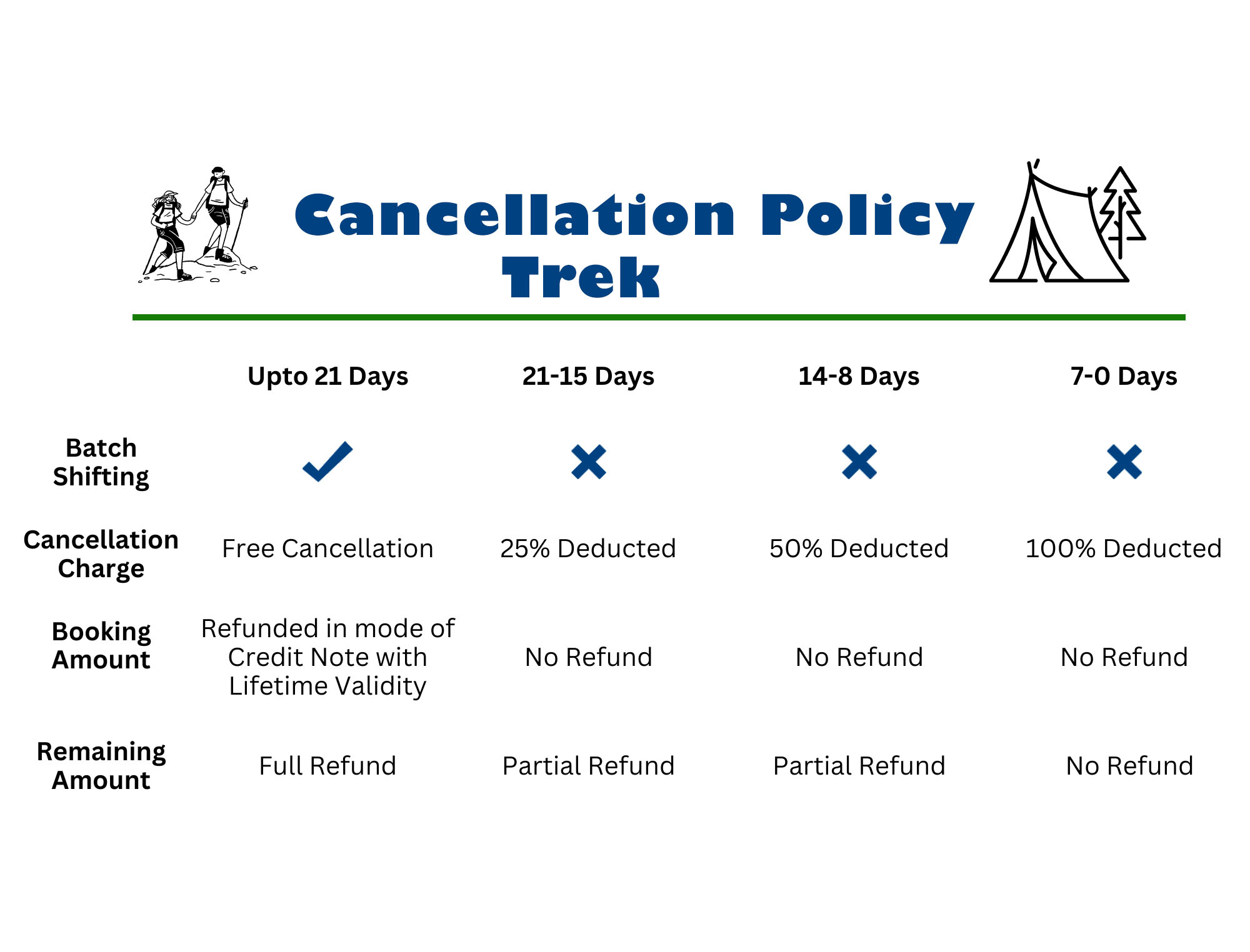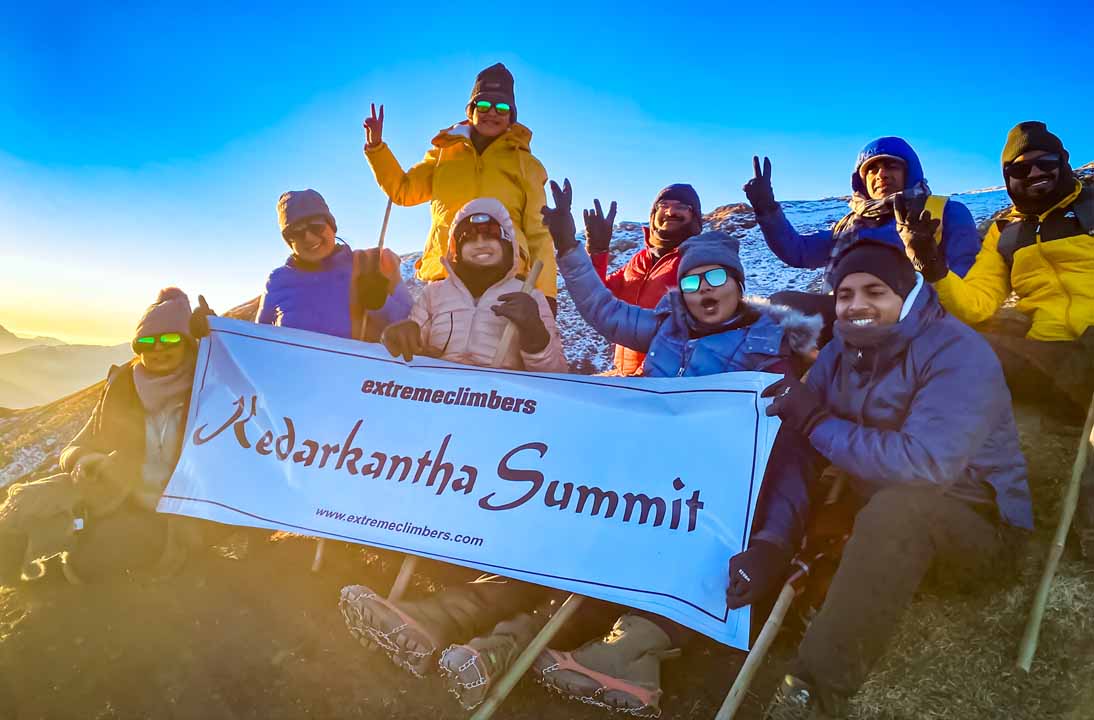-
Chadar Trek – Ladakh
Zanskar Region, Ladakh (500+ Reviews)
-
Trek Fee
26,999
| altitude : | 11,100Ft. |
| base camp : | Leh |
| duration : | 9 days |
| trek difficulty : | Difficult |
| trek length : | 65kms |
Overview
One can have this experience on the Chadar Trek in Ladakh. The Chadar trek is like no other trek in the Himalayas and is the most arduous winter trek in India. This is exactly what makes the experience exciting.
Chadar means ‘Blanket,’ and this trek is named so because the trail consists of trekking on the frozen Zanskar river, which gets covered in a thick blanket of ice as soon as winter commences. As exciting and interesting name this trek has, the experience is indeed the same and additionally, gives you the feeling of being invincible.
This 9 days-long trek will have you experience the strongest you have been – both mentally and physically. It is indeed a rewarding trek, with a better you that will flourish more in life additionally, with the best adventurous memories from here.
The Chadar trek offers an opportunity to explore and experience the Zanskari and Ladakhi culture and hospitality. Apart from all this, the frozen waterfalls that you see during Chadar Trek leave you in awe. The best months to do this trek are January and February and seeing the difficulty level, the trek is not recommended for beginners.
Itenirary
We will arrive in Leh and check into our designated stay. After a brief introductory session, we will spend the rest of the day at leisure.
Travelers are advised to explore Leh Town, explore the Cafes in Leh, and indulge in local sightseeing in the evening.
Dinner followed by an overnight stay in Leh.
After early morning breakfast, we’ll head for a sightseeing tour.
We will visit the Shanti Stupa and explore the Leh Market in the evening. If time permits, we will explore other attractions in Leh as well.
Dinner and overnight stay in Leh.
Note: The Chadar trek requires trekkers to be properly acclimatized and hence we need to spend at least two days in Leh.
We’ll head to get a thorough medical check-up at SNM Hospital. Due to the perplexing nature of this specific trek, participants must obtain medical certification before undertaking the Chadar trek as per the government.
A clearance certificate will be issued after a medical check-up and trekkers will only be allowed to embark on the Chadar Trek if they are found to be fit and are properly acclimatized.
After enjoying morning tea and breakfast, we’ll drive towards Shingra Koma. This ride is not for the faint-hearted as jagged roads and hairpin bends make this a tricky drive. The sight of the surrounding mountain ranges makes for a scenic ride that you’ll enjoy.
Upon reaching Shingra Koma, We will start our trek to Tsomo Paldar right from the starting point of the frozen Zanskar river. After walking on multitudes of icy surfaces, you’ll slowly start to understand the pattern of walking. Soon, you’ll reach the campsite.
Dinner followed by an overnight stay at the Tsomo Paldar campsite.
In the morning, we will have hot tea and breakfast. After that, we will start trekking towards Tibb Cave which is our next campsite.
Enroute, you will be encountering some of the most enchanting frozen waterfalls. As you keep walking, you’ll come across rock patterns and sedimentations. En route, we’ll have our packed lunch.
Upon reaching Tibb Cave, we will set up camps and spend the rest of the day at leisure.
Dinner followed by an overnight stay in campus.
After having breakfast in the morning, we will head towards the most anticipated campsite which is Nerak.
The 13km trail traverses through the most iconic landmark of the Chadar Trek which is the Frozen Waterfall. Hot lunch will be served on your way to the Nerak campsite.
Trekkers are advised to wear proper layers to stay safe from the freezing cold. If time permits, we will visit the Nerak Village as well.
We will set up camps at a distance of 15-20 minutes from the waterfall.
Dinner followed by overnight stay in Nerak campsite.
After early morning breakfast, we will head back to our campsite at Tibb Cave. We will be retracing our steps back, admiring the beauty of the mystical frozen Zanskar.
Upon reaching the campsite at Tibb, we’ll spend the rest of the day at leisure.
Dinner followed by an overnight stay in Tibb.
After having early morning breakfast, we will head out of Tibb and move towards Shingra Koma, crossing Gyalpo.
En route, you might get a chance to see paw prints of wild animals like snow leopards, ibex, and foxes.
In the evening, We will drive back to Leh and spend the night at our designated stay.
After early morning breakfast, we will check out from the hotel.
The group will part ways with fond memories of the trek
Departure from Leh.
Location
Photos
INCLUSIONS
Inclusions- Accommodation: 1 Night in a Hotel / Homestay on a triple/quad sharing basis. 3 Nights accommodation in a tent on a triple sharing basis.
- Transportation: Surface transfer from Dehradun – Sankri – Dehradun by Sumo / Bolero / Tempo Traveler ( Depends on the number of travelers).
- Meals: All Meals from (Day 1 Dinner to Day 5 Lunch) are included. We provide simple nutritious vegetarian food on all days of the trek.
- Snacks: Morning / Evening Tea / Coffee with light snacks and soup while on the trek.
- Camping logistics: Tent, Sleeping bags, Mattresses, Dining tent, Toilet tent.
- Trek Leader Qualified and Experienced Trek leader and support staff.
- Permits: All necessary fees and permits.
- Trekking Equipment: Gaiters, Micro Spikes, and Rope if required.
- Safety Equipment: Basic First Aid kit with Oximeter and Oxygen Cylinder.
- Guide ratio: 1:10
EXCLUSIONS
Exclusions- Any expenses of personal nature.
- Meals during transit.
- Insurance of any kind.
- Unscheduled delay due to landslide.
- Cost Escalation due to “ Force Majeure and Evacuation charges”.
- Anything not mentioned explicitly in the above program.
- *You can apply for travel insurance prior to the trek.


THINGS TO PACK
- Backpack (Min 55 Ltrs with rain cover): You must pick a good quality backpack with a comfortable fit and straps that won’t give you shoulder pain. You can check out your nearest Decathlon store for a good trekking backpack.
- Day backpack (20 – 30 Ltrs): When you head towards the summit, you are required to carry only a few necessary items and for that, you need a day backpack as you will leave your bigger one on the campsite.
- Floaters or Sandals: Although the entire trek requires a good quality shoe, you still need to let your feet breathe to avoid chafing and blisters. When you are at the camp, a good pair of sandals and floaters will help you to move freely.
- Trekking Shoes: A good trekking shoe is comfortable, provides ankle support, and has a good grip as well. They shouldn’t be chunky, instead, they should be lightweight and sturdy.
- 3 Quick Dry Tees: You must keep at least three pairs of quick dry tees so that you can wash them in between stops for proper hygiene.
- 2 Track Pants: A good pair of track pants made of polyester will let your skin breathe. They’re lightweight, dry easily, and comfortable to walk around in. You can easily avoid chafing and rashes by investing in a good pair of track pants.
- 3 Pair of Cotton Socks: Cotton socks are extremely comfortable to move around in and are lightweight as well which is why you can always count on a good pair of cotton socks while trekking. However, keep in mind to change them and avoid wearing them when they are wet.
- 1 Pair of Woolen Socks: A good pair of woolen socks, especially merino, are comfortable, limit odors and provide adequate insulation from the cold so you can wear them at night.
- 1 Poncho: A poncho is an evolved form of a raincoat that provides coverage to your body as well as your bag and ensures total water protection from rain.
- 1 Heavy Jacket: It’s emphasized that you need to carry proper layers so you can avoid getting cold which is why you need to carry a heavy jacket that you can put on over your other clothes.
- 1 Pair of Thermal: Thermal is a piece of garment that helps in keeping your body warm in cold temperatures. It is a necessary item that you need when going on a high-altitude trek.
- Quick-dry towel: A quick dry towel will help in maintaining proper hygiene. It must dry quickly because the wet fabric will only increase the chance of bacterial growth.
- Windproof Jacket: As you ascend towards high altitude, you get hit by chilly winds and a windbreaker jacket is designed to resist them. They are lightweight and are made of synthetic fibers.
- Woolen Cap: A woolen cap will help prevent cold when you ascend to high altitude. You can also cover your ears to avoid any pain and discomfort you might face in them when going at high altitudes.
- Gloves: Insulated gloves help in maintaining proper body heat in your hands and also provide a better grasp on trekking poles.
- Sun Cap: A lightweight sun cap with side flaps is perfect to keep your head cool and avoid sunburns on a sunny day.
- 1 Scarf or Balaclava: Along with sun rays and chilly winds, you also get hit by dirt and grime during treks which is why it’s important to carry a scarf or balaclava so you can cover your face when needed.
- Lip Balm: Your lips can become chapped due to the harsh cold winds so it’s important to keep them moisturized.
- Cold Cream & Sun Screen (SPF 40+): To avoid sunburns and chafing, you need to put on sunscreen as well as cold cream.
- Antibacterial powder: To avoid rashes that develop from a bacterial infestation in your armpits and other parts of your body.
- Water Bottle 1 Lt.: Hydration is extremely important when it comes to trekking. Carrying a water bottle that you can refill with Himalayan water is a must.
- Headlamp or torch: You can’t rely on moonlight when you are in the mountains. A torch or even a headlamp with a fresh pair of batteries is always a good idea to bring along.
- Bag for all your Toiletries: A bag with all your essentials including napkins, toothpaste, sanitizers, paper soap, etc should be carried in a ziplock bag.
- Personal Medications and basic medical kit: A few cuts and bruises are almost inevitable when you are on a trek so carrying a medical kit with bandages, Dettol, etc is necessary.
- Dark Sunglasses / People who use spectacles (Use Photochromic glasses instead of contact lenses): Photochromatic glasses are specs that are designed to transform into anti-glare shades depending upon exposure to the sun. They are good when it comes to eye protection but one can also opt for clip-on glasses etc.
- Trekking Pole: The trekking pole assists in more than one way. It saves energy while also providing stability and helps you to maintain proper balance.
- Documents: Identification proofs like Aadhar Card, Drivers License.
- Extra Polythene: In case your clothes get wet or your garments don’t dry, you can carry them in polythene. However, make sure that all the plastic that you are carrying into the woods leaves with you. Don’t litter in the mountains.
- Camera: This should be obvious. To make sure that you get to capture all the great moments from your trek. Make sure that you have enough storage and some extra batteries as well.
Reviews

Wilson
Had a great experience with Pradeep bhai from sankri guide modi ji

Ajay Kandari
Good experience with extreme climbers

Mohit Singh Chauhan
Nice arrangement and humble ,experience, And supported guide . It’s been most adventurous trip for us thanks to rocking extreme climbers ☺️😊

Mayank Mamgain
This was my second trek har ki dun and man… It was mind blowing. The scenery was beautiful and lively all through-out the trek…..


